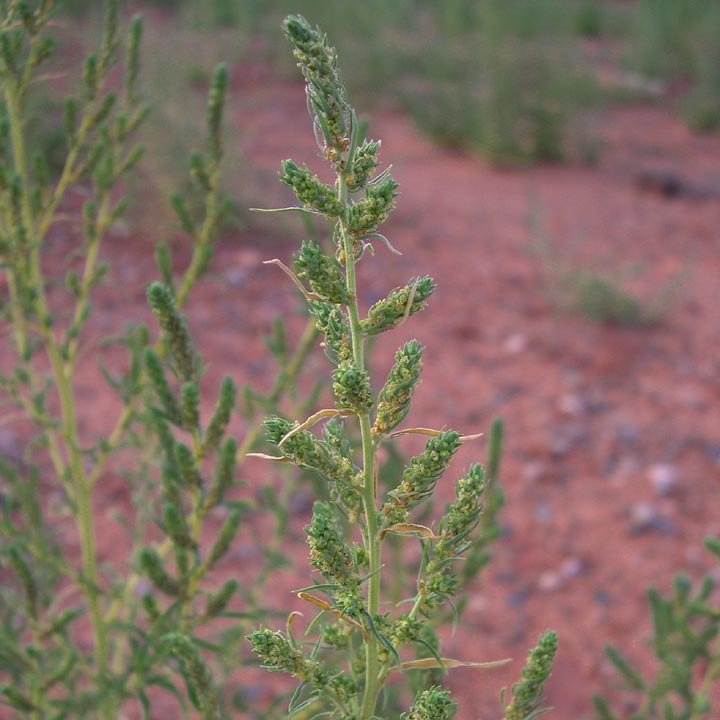
|
Family: Amaranthaceae |
Herbs, annual, ± densely pubescent. Stems erect, semierect, ascending, or prostrate, branched or simple, not jointed, not armed, not fleshy. Leaves alternate, sessile (or sometimes narrowed to pseudopetiole); blade linear, lanceolate, or lanceolate-elliptic, flat or semiterete (semicylindric in transverse section; ± fleshy), base cuneate, margins entire, apex obtuse to acute. Inflorescences terminal spikes, flowers [1-]2-3 in axils. Flowers bisexual, sessile, ebracteolate; perianth segments 5, ± hirsute or pubescent, rarely glabrous, at maturity with spiniform, hooked, or conic appendages; stamens 5; styles and stigmas 2(-3). Fruiting structures: fruiting bracts absent; achenes ovate-compressed; pericarp free, membranous. Seeds horizontal, lenticular; seed coat brownish, smooth; embryo annular; perisperm copious. x = 9. Bassia occurs primarily in steppe and desert zones. A. J. Scott (1978) circumscribed Bassia in a very broad sense, including Kochia and some other genera. Only one section of Kochia is somewhat transitional towards Bassia (see comments in the treatment of Kochia). The present treatment follows the traditional concepts of Bassia and Kochia.
Fls perfect, solitary or in short spikes from the upper axils, forming terminal spikes or spike-like panicles; sep 5, pubescent, incurved in fl, persistent and incurved over the fr, and developing dorsal appendages; stamens 5; ovary depressed-globose; styles filiform; seed horizontal, the embryo annular; shrubs or annual herbs with much-branched stems, numerous small, hairy lvs, and minute fls, villous at least in the infl. 20, Old World. Gleason, Henry A. & Cronquist, Arthur J. 1991. Manual of vascular plants of northeastern United States and adjacent Canada. lxxv + 910 pp. ©The New York Botanical Garden. All rights reserved. Used by permission. |
This project was made possible in part by the Institute of Museum and Library Services [MG-70-19-0057-19].
Powered by Symbiota



